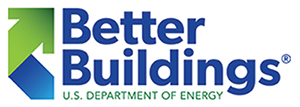 As part of Gables Residential’s continuing efforts to integrate sustainability into all aspects of its business and apartment management practices, the company has selected to partner with the U.S. Department of Energy’s (DOE) Better Buildings Alliance.
As part of Gables Residential’s continuing efforts to integrate sustainability into all aspects of its business and apartment management practices, the company has selected to partner with the U.S. Department of Energy’s (DOE) Better Buildings Alliance.
Sue Ansel, Chief Executive Officer, says, “Gables is committed to being a responsible corporate citizen, developer, owner and manager of real estate. Our strategy includes seeking innovative approaches to improve the impact of our daily actions and sourcing products and services to enhance the community and environment. We believe these new solutions will help us contribute to the well-being of the broader community by continuing our long tradition of creating a lasting quality product for future generations.”
Gables’ commitment to excellence in new development and construction, environmental operations, management of communities and corporate office initiatives is founded in sustainable practices. These practices focus on resident comfort and wellness and building performance in areas of responsibility including transit-oriented development, energy and water efficiency, reduction of GHG emissions, indoor air quality, procurement decisions and waste management.
The Better Buildings Initiative is a partnership of experts and advocates committed to setting goals and working with their peers to share energy-reduction success strategies, drive thought leadership, and lead by example.
|
|
Cindy Zhu, Fellow, DOE, shared some information about the program and its different levels of commitment and resources.
How do you become an Alliance Partner?
Participation is voluntary and free, as is access to all our public resources on the Better Buildings Solution Center. We call our Alliance program a peer networking program. To join the Alliance, partners agree to set an internal energy goal, share this with the DOE and work with us on case studies where they achieved a significant energy or water reduction in a single building (20 percent or more) or made progress toward an interesting and widely applicable energy-efficiency barrier. All case studies are published and become part of the Better Buildings Solution Center for others to replicate at their own organizations.
What networking benefits do participants enjoy?
We believe peer learning is critical for the industry so we often try to connect partners with others who are working on similar challenges, and we frequently invite our partners to speak publicly with us, on webinars, peer networking calls or as part of conference presentations. Both Alliance and Challenge partners gain access to the wide array of technical and market-related energy efficiency resources at DOE and our National Labs.
What is the difference between a Better Buildings Alliance Partner and a Challenge Partner?
We like to call the Challenge members our leadership circle. Challenge partners do everything that Alliance partners do while also setting a public, 20 percent portfolio-wide energy reduction 10-year goal. Partners can set their baseline year to be three years prior to the year they join. They share their annual utility bill data with DOE, so that we can help them track their progress toward the 20 percent goal, verify the savings they claim and recognize them for their market leadership.
What types of portfolios do Partners operate?
We work with a range of multifamily building portfolios in the Better Buildings program, from affordable and public housing, student housing, and market rate and mixed portfolios. We recognize the nuances toward energy efficiency in each building type and aim to share energy strategies that work for each type of building.
How does DOE assist Partners with their data?
We understand that multifamily partners have unique data-access issues, so there is an option to use a data sampling protocol for the units in their portfolio. DOE also created the Data Access Accelerator to give building owners the tools to access whole building energy data from their utilities.
DOE provides significant hands-on technical assistance and data analysis for Challenge partners to understand their portfolio energy use. We work with our partners to publish building-specific case studies and organizational case studies based on their commitment to save energy. DOE offers many forms of national recognition for Challenge partners as they progress through their energy goals. The Better Buildings Solution Center includes a wide array of resources our partners have contributed and is free for the public to access.
